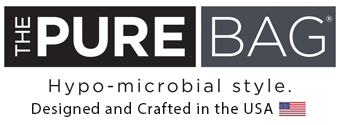Whether you’re just getting started or have been practicing yoga for years, you probably know there are many different yoga mat options. They come in different colors, patterns, textures, materials, lengths, thicknesses, and much more. But when it comes to germs, what yoga mats offer the best protection? We broke down five of the most common mats to shed some light on the level of yoga mat protection each one offers.
- PVC – standing for polyvinyl chloride, PVC mats are the most commonly used mats by yoga newcomers. However, they get a lot of flack from yogis because they are the least environmentally friendly of the yoga mat options. They are open-celled, meaning they have excellent grip but hold onto and incubate germs longer than other mats.
- Rubber – this is a very common alternative to PVC mats. They are sticky and comfortable, which makes them pricey but great options for longer yoga classes. Because they are made of latex, people with latex allergies should stay away. When it comes to germs, they don’t absorb too much sweat and bacteria but should still be cleaned.
- Thermoplastic elastomer – a blend of rubber and plastic, these mats are stiff but flexible and very durable. They are environmentally friendly and can be recycled and reused, which is an added bonus. They are closed-cell, meaning there are less pores, so they are antimicrobial and easy to clean.
- Cotton – these yoga mats are known for their comfort, non-slip grip, and lightweight qualities. While cotton mats are arguably the softest and most comfortable option, they are also very absorbent of all the sweat and moisture they come in contact with. That means they are most likely to carry germs and bacteria and hold onto them for longer periods of time.
- Jute – these yoga mats are sustainable and resilient, making them not only eco-friendly but also long-lasting. Some people find these mats too rough, and they put down a towel before their sessions. Because jute is a fibrous material, it absorbs less moisture compared to other yoga mats. However, that’s not a bad thing because it means jute is a good choice when it comes to yoga mat protection from germs.
Regardless of what type of mat you choose, a mat wrap is a wise choice when it comes to germ protection. Then, no matter how porous and susceptible to germs your yoga mat is, you’ll know you’re protected. Want to get yourself a yoga mat wrap before your next class? We have a Silver Lining Mat Wrap made of hypo-microbial materials that offers yoga mat protection before and after every use. Get yours here.

